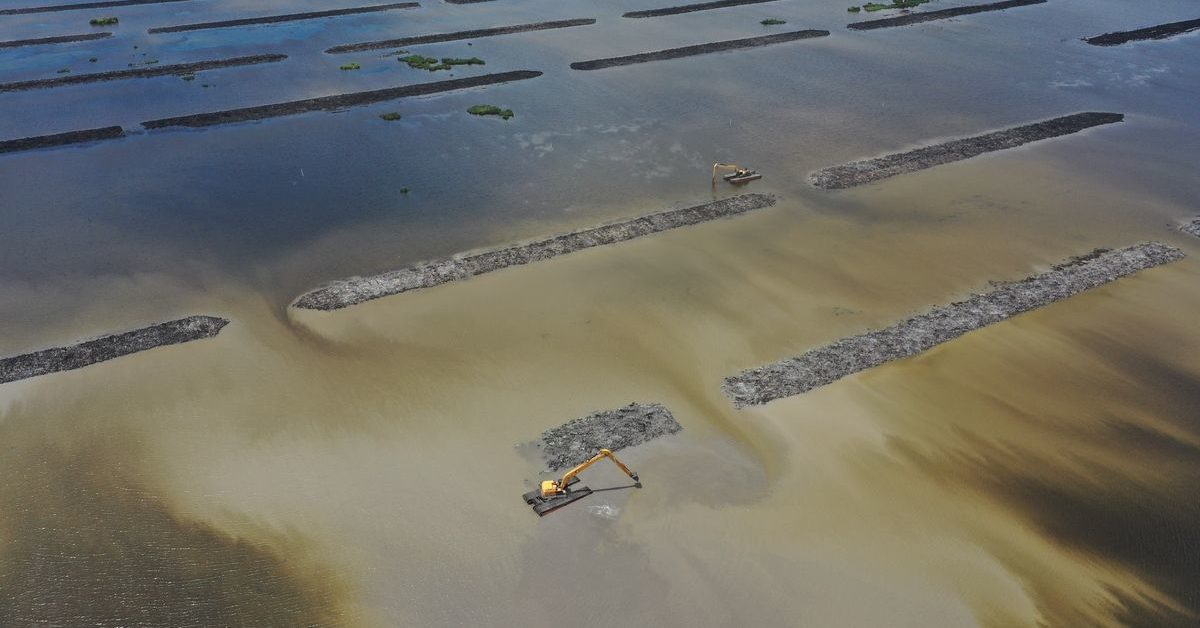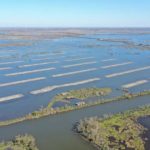Wetland mitigation is the process of creating or restoring wetlands lost to development. The ultimate goal is to replace as much as possible the functions and public benefits of the destroyed wetlands.
The Clean Water Act (CWA) was enacted to restore and maintain the chemical, physical, and biological integrity of United States waters.
To minimize water pollution and threats to the nation’s aquatic resources, the CWA prohibits the discharge of dredged or fill material into aquatic ecosystems unless a permit has first been issued by the United States Army Corps of Engineers (USACE). Alternatively, approval can be sought from an authorized state regulatory agency.
For every authorized discharge into aquatic ecosystems (including wetlands), the adverse impacts must first be avoided and then minimized to their fullest extent. When impacts are unavoidable, compensatory mitigation must be undertaken.
But how does wetland mitigation work? Read on to discover the requirements for compensatory wetland mitigation, how the process works for farmers, how wetland mitigation banks are created, and other related info.
What are the Requirements for Compensatory Wetland Mitigation?
Compensatory wetland mitigation is the third step in a three-part process known as The Mitigation Sequence. The first step is to avoid any adverse impacts to aquatic resources (including wetlands).
If adverse impacts cannot be avoided, the second step is to minimize these impacts. If there are still unavoidable adverse impacts, the third step is to implement compensatory mitigation.
The ultimate goal of compensatory wetland mitigation is to offset any unavoidable adverse impacts after steps one and two (i.e. avoidance and minimization) have been cleared.
The Mitigation Sequence is designed to determine the type and level of wetland mitigation required under Section 404 of the Environmental Protection Agency’s (EPA) Clean Water Act.
Either the United States Army Corps of Engineers (USACE) or the approved state authorities is responsible for determining the correct type and amount of compensatory mitigation that is needed.
The USACE and EPA jointly recognize four main compensatory mitigation strategies:
- Restoration – The goal of this strategy is to restore the natural functions and characteristics of a former or damaged wetland. The restoration process may result in a gain of wetland acres, wetland function, or both.
- Creation – Also known as establishment, creation refers to the development of a wetland or other aquatic resource where one did not previously exist. This can be done by manipulating the physical, biological, or chemical characteristics of the site.
- Enhancement – This refers to activities conducted within existing wetlands to improve one or more wetland functions. Enhancement is done to improve a specific part of the ecosystem, such as wildlife diversity, water quality, and flood water management.
- Preservation – This refers to the permanent protection of ecologically significant wetlands or other aquatic resources. Preservation is conducted through the implementation of title transfers, conservation easements, and other legal and physical instruments.
How Does Mitigation Banking Work for Farmers?
While compensatory wetland mitigation is commonly used to offset unavoidable adverse impacts to wetlands resulting from development, it can also be used to offset impacts resulting from agricultural production.
The Wetland Conservation provisions of the Food Security Act of 1985 (also known as the “Swampbuster” provision) officially discouraged the conversion of wetlands into agricultural land. The Swampbuster provision also removes incentives to further discourage the production of agricultural commodities on converted wetlands.
Farmers who want to access the United States Department of Agriculture’s (USDA) programs need to fill out Form AD1026. This form affirms that farmers will not drain, dredge, or fill wetlands for the purpose of growing commodity crops.
However, in situations where degradation is unavoidable, or on-site mitigation is challenging, the bill allows for off-site mitigation via mitigation banking.
Mitigation banking is a system of debits and credits that is designed to ensure that ecological damage is offset by the preservation and restoration of natural habitats and aquatic resources—ultimately resulting in no net loss to the environment. The mitigation bank is the site set up for the purpose of restoring, creating, or enhancing natural habitats and aquatic resources (including wetlands).
Farmers can purchase credits from mitigation banks to offset the damage to wetlands. When a mitigation bank is set up, the landowner retains ownership and use of the development site, while a conservation easement protects the wetlands from damaging activities.
Conservation easements are voluntary legal arrangements that permanently limit the development of land to safeguard its conservation values.
The size and scope of the mitigation plan will determine the number of credits that will be made available for sale. The price of the credits will be negotiated between buyers and sellers with no involvement from government bodies like the USDA.
How are Wetland Mitigation Banks Created?
Persons and entities (e.g. mitigation banking companies) that want to create wetland mitigation banks are referred to as mitigation bankers. When selecting environmentally damaged sites to regenerate, mitigation bankers will need to work closely with regulatory agencies like the Mitigation Banking Review Team (MBRT) and the Conservation Banking Review Team (CBRT).
Both the MBRT and CBRT will oversee the development and maintenance of the mitigation bank. They will also approve the number of mitigation credits that the wetland mitigation bank can earn and sell.
Farmers and commercial developers who want to undertake development projects on or near streams or wetlands can purchase mitigation credits to offset the negative impact of their projects on the local environment.
The EPA has listed the four main components of a wetland mitigation bank:
- The bank site – This is the area that has been designated for restoration, creation, enhancement, or preservation.
- The bank instrument – This is the legal agreement between the mitigation bankers and regulators. The bank instrument establishes liability, performance standards, the terms of credit and debit approval, as well as the management and monitoring KPIs.
- The Interagency Review Team (IRT) – This consists of the representatives from the federal, state, local, or tribal regulatory and resource agencies. The members of the IRT are signatories to the banking instrument and oversee the creation, use, and operation of the mitigation bank.
- The service area – This refers to the geographic area upon which permitted impacts can be offset at a mitigation bank site. This area is also commonly referred to as the “HUC”, or hydrologic unit code.
What are the 3 Steps of Mitigation?
The three types of mitigation, as defined by the Council on Environmental Quality (CEQ), are; avoidance, minimization, and compensatory mitigation. All three types of mitigation are generally applied in sequential order.
- Avoidance – This refers to the mitigation of an environmental impact on an aquatic resource. Mitigation is accomplished by choosing the least-damaging project type, location, and development method. Avoidance, in this context, is achieved by assessing applicable and practical alternatives. The overall environmental impact is also taken into consideration.
- Minimization – This refers to limiting the impact of a development project on the selected site’s resources. Minimization can be achieved by incorporating applicable and practical design and by implementing risk avoidance measures.
- Compensatory mitigation – This refers to offsetting the unavoidable adverse impacts to an aquatic resource after avoidance and minimization have been applied. The four main compensatory mitigation strategies are restoration, creation, enhancement, and preservation.
As outlined in the 1990 Memorandum of Agreement between the Department of the Army and the EPA, mitigation can be classified in three general steps: avoidance, minimization, and compensatory mitigation.
For projects authorized under Section 404 of the Clean Water Act (CWA)—which requires dischargers of dredged or fill material to obtain a permit—compensatory mitigation isn’t considered until all practicable steps have been taken to first avoid and then minimize adverse impacts to aquatic resources.
Compensatory mitigation is undertaken to ensure that the federal government meets its overarching goal of no net loss of wetland function, value, and acreage.
Who Should Be Included in the Mitigation Plan?
The mitigation plan requires the participation of the mitigation bankers and the regulatory agencies that are responsible for overseeing and approving the bank instrument.
The regulatory agencies collectively form part of the Interagency Review Team (IRT). The IRT comprises representatives from the USACE, National Marine Fisheries Service (NMFS), and other applicable government agencies.
Representatives from relevant state, tribal, and local regulatory and resource agencies will also be asked to participate. And while no agency is required to co-sign a bank instrument, once they do co-sign, that agency affirms their agreement to the terms and conditions of that instrument.
The general public will also be notified of bank proposals and will have the opportunity to comment on the terms and conditions of these proposals.





